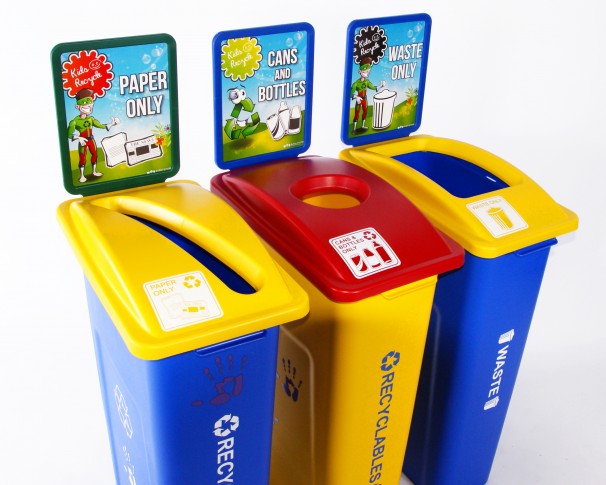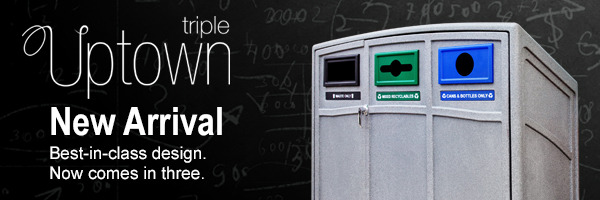Starting a recycling program for your school is a no-brainer: schools have a lot of people creating a high volume of waste, a large proportion of which can be diverted from landfills. So if your school doesn’t have a recycling program, what are you waiting for? Busch Systems is here to give you a step-by-step guide to implementing a successful recycling program that faculty and students will get excited about.
Step 1: Research
Check to see if there were any past recycling efforts at the school. Find out what worked and identify any obstacles that may have kept the program from running smoothly in the past. Make sure the program is in compliance with any school policies regarding waste and recycling.
Familiarize yourself with waste and recycling laws in your area to make sure your future program is within legal boundaries. Look into what kinds of waste is being produced by the school and check to see what waste streams are collected by local waste management companies. Check the frequency of pickup and the cost of diverting waste.
Additionally, check for any local, state/province, or country-wide grants that might be available and often assist in alleviating the costs of implementing a sustainability program.
Step 2: Determine Your Needs
With your research complete, the next step is figuring out what your program needs in order to be successful. Here are a few things to take into consideration:
- More staff may be necessary in order for the program to run properly
- A green team of student volunteers would be an excellent way to maintain the program
- The number of containers you need – don’t neglect any areas where waste is generated.
Once the program needs have been determined, the next step is to take that information and come up with a proposal. 
Step 3: Write a Proposal
When writing the proposal be sure to highlight the environmental and financial benefits of having a recycling program implemented at the school. Include the entire process of starting the recycling program, from the implementation of containers to the collection of waste and recycling.
Step 4: Purchase Containers
Now that your awesome proposal has netted you the funds needed to start the program, it’s time to buy bins! Don’t jump the gun too quickly though, there are some things to take into consideration when buying recycling and waste containers:
- One size does not fit all, what works in a classroom won’t necessarily work in hallways or cafeterias.
- Adding signage to your bins is a great way to promote your program and educate students to ensure material is sorted properly
- For younger students, bold and colorful bins are a fantastic way to get them excited about recycling.
- Buying bins manufactured in North America will lower your carbon footprint!
- Trash cans should never feel lonely; a recycling bin makes a great companion
- Think of the areas in your schools where the collection would take place – classrooms, cafeterias, offices, hallways, and outdoors. Sensitive documents need a place to go as well.
Now that the right recycling and waste bins have been chosen, the next step is implementing and monitoring your recycling program.
Step 5: Implementation & Monitoring
It’s go time! Here’s a checklist of what to do to make implementation as easy as possible:
- Contact the waste hauler you’ve chosen and go over the final details
- Appoint your recycling program coordinator
- Educate students and faculty about the program and the positive effects it will have on the environment
- Set goals for your program and pass them along to students and faculty
- Come up with a name for your program, create a logo.
- Gather a team of eager student volunteers to get involved with the program
- Use online resources on how to get your students interested and excited about recycling!
Once implementation is complete the final step is to monitor the program. The individual appointed as program coordinator will need to observe and give feedback on any obstacles preventing the program from working efficiently. Keep students and staff up-to-date on the program’s success and the positive impact their recycling efforts are having on the environment. A recycling program in elementary, middle, and high schools is a great way to mold young minds into being more conscious of how their actions can impact the environment.












